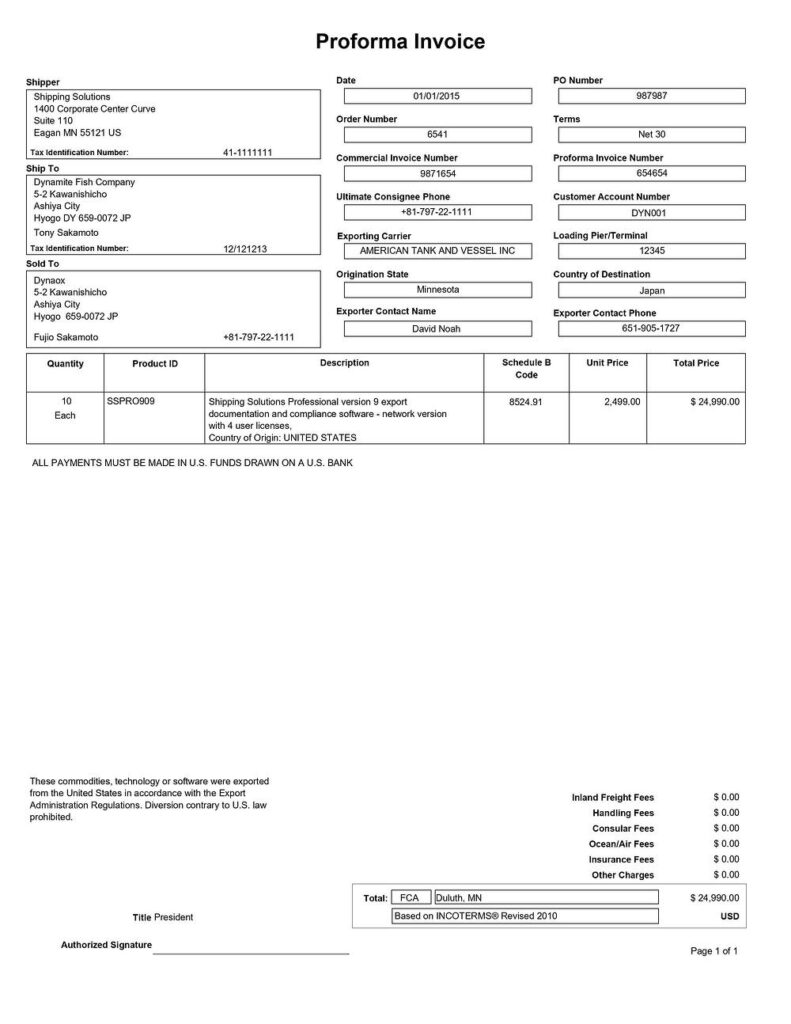University Express Mail Service
Documentship offers next day or two-day service to destinations depending on the zip code and time day that it was mailed.
Read More...Documentship offers next day or two-day service to destinations depending on the zip code and time day that it was mailed.
Read More...A certificate of origin is a document that certifies the country where the goods originated. A certificate of origin may be required by the customs authority of the country where the goods are being imported. It’s also frequently used to determine how much duty the importer will pay to bring in the goods.
Most countries accept a generic certificate of origin form that includes information about the exporter and importer, the description and harmonized tariff code of the goods, and the country of origin. These certificates are usually prepared by the exporter and certified by the local chamber of commerce.
The importer is heavily dependent upon the assistance and cooperation of its U.S. suppliers in producing accurate and well-documented declarations of origin.
Electronic Certificate of Origin
Previously, companies were required to download a certificate of origin form, manually enter the information, print the form, sign it, deliver it or courier it to a chamber of commerce office, wait to get it reviewed and signed by the appropriate chamber employee, return it or courier it back to the company office, and courier the signed and certified documents to the importer.
Today, companies can enter their shipment information online, transmit it to a chamber, and get a certified certificate of origin in less than a day and at a fraction of the cost. Online certification saves on couriers, travel time, postage, and parking fees.
Free trade agreements (FTA) between the United States and other countries utilize a certificate of origin to document that the goods listed on the form qualify for special tariff treatment under the terms of the free trade agreement.
The U.S. currently has 14 FTAs in force with 20 countries:
The Shipper’s Letter of Instruction (SLI), while not required by any regulatory agency, serves a very important function. Its purpose is to convey specific instructions from the exporter to his agent, usually an international freight forwarder.
An SLI also typically includes a limited Power of Attorney statement that gives the freight forwarder the authority to sign documents on behalf of the exporter.
Preparing and submitting an SLI provides your company with a written record of who received the shipping documents, who to contact for questions, who to contact for proof of export, and who issued the export control information that was used to support the decision to export the goods.
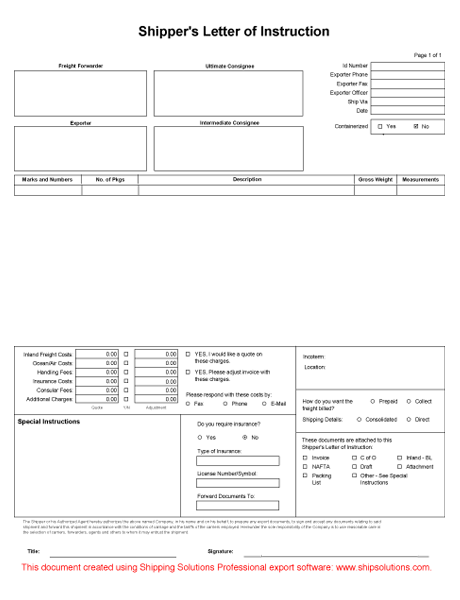
The air waybill is the equivalent of the ocean bill of lading but for air transport. However, the air waybill cannot be negotiable; they may never be consigned “to order of shipper.”
An air waybill is the document that controls the routing of the exporter’s cargo while it is in the hands of the air carrier or a consolidator.
As an exporter, correctly filling out a bill of lading is important if you want to get paid on time. Why? Because it determines the shipment date, and payment date is often associated with shipment date. Financing, too, is often associated with shipment date, as banks often refer to pre-shipment financing or post-shipment financing. Plus, more than 10,000 shipping containers are lost annually. Without a correctly completed bill of lading, that could mean a major headache trying to get compensated for your loss.
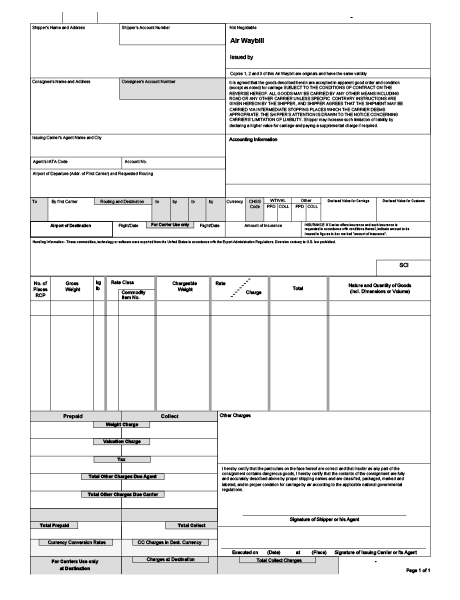
The ocean bill of lading serves as both a contract for carriage and a document of title for the cargo. The bill of lading identifies the parties on both ends of the shipment, as well as a description of the goods and routing instructions.
There are two categories of ocean bills of lading that reflect the terms and conditions of the sale of the goods.
The straight bill of lading is used when the shipment is consigned directly to the named consignee and no other party. Typically this type of consignment is used for open account or cash in advance transactions. The consignee can take possession of the goods at arrival by presenting a signed original bill of lading to the carrier.
An ocean bill of lading consigned “to order” or “to order of shipper” is negotiable once it is endorsed on the back by the shipper or their representative. The endorsed original bill of lading is usually sent to the bank in the buyer’s country and held until the transaction is satisfied under a document collection, cash against documents, or a letter of credit. Once the endorsed original bill of lading and other required documents are in the hands of the buyer, the buyer can transfer the bill of lading.
As an exporter, correctly filling out a bill of lading is important if you want to get paid on time. Why? Because it determines the shipment date, and payment date is often associated with shipment date. Financing, too, is often associated with shipment date, as banks often refer to pre-shipment financing or post-shipment financing. Plus, more than 10,000 shipping containers are lost annually. Without a correctly completed bill of lading, that could mean a major headache trying to get compensated for your loss.

An inland bill of lading is often the first transportation document issued for an international shipment. They are used for cargo shipments by rail or road but not sea.
The inland bill of lading is a contract between you, the owner of the goods, and the carrier stating what goods you’re shipping, where the shipment is coming from, and where it’s headed. It serves as a receipt issued by the carrier once your shipment is picked up. It can also serve as a document of title, which allows the person holding it to claim possession of your shipment.
Tips for Completing an Inland Bill of Lading:
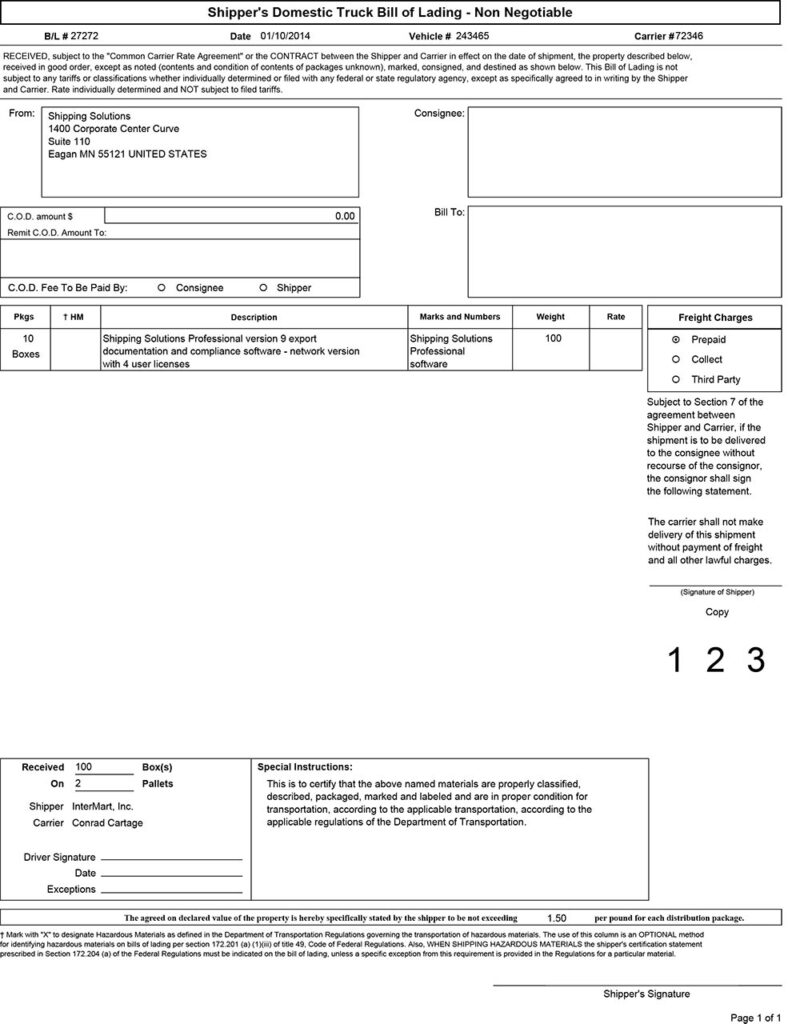
A standard Shipper’s Letter of Instruction provides transportation and documentation instructions to a freight forwarder, but it does not typically include specific line-item level product information that would allow the forwarder to file through the Automated Export System (AES). The National Customs Broker & Forwarders Association of America (NCBFAA) has issued a model SLI that includes the level of detail required to file through AES including the additional data fields required by changes to the Foreign Trade Regulations that went into effect in April 2014.

Packing lists come in various formats, all with the same basic functions:
Packing lists are not required by the customs laws of every country, but they can be crucial to the successful completion of your exporting process.
A good packing list provides fairly detailed information.
It should include:
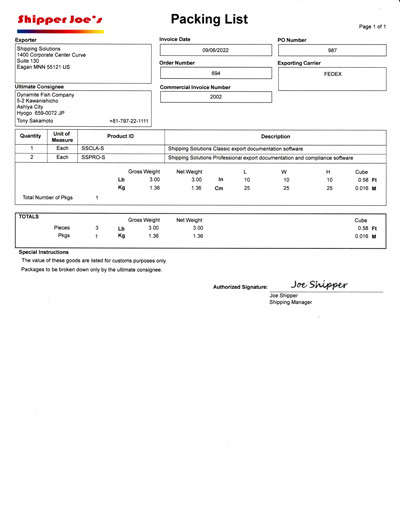
About the Commercial Invoice
The commercial invoice is the single document that describes the entire export transaction from start to finish. It is the basis for all other export documents because it is a bill for the goods from the seller to the buyer. It is also the primary shipping document used by customs worldwide for commodity control and valuation. It’s critical to include a commercial invoice in your export documents.
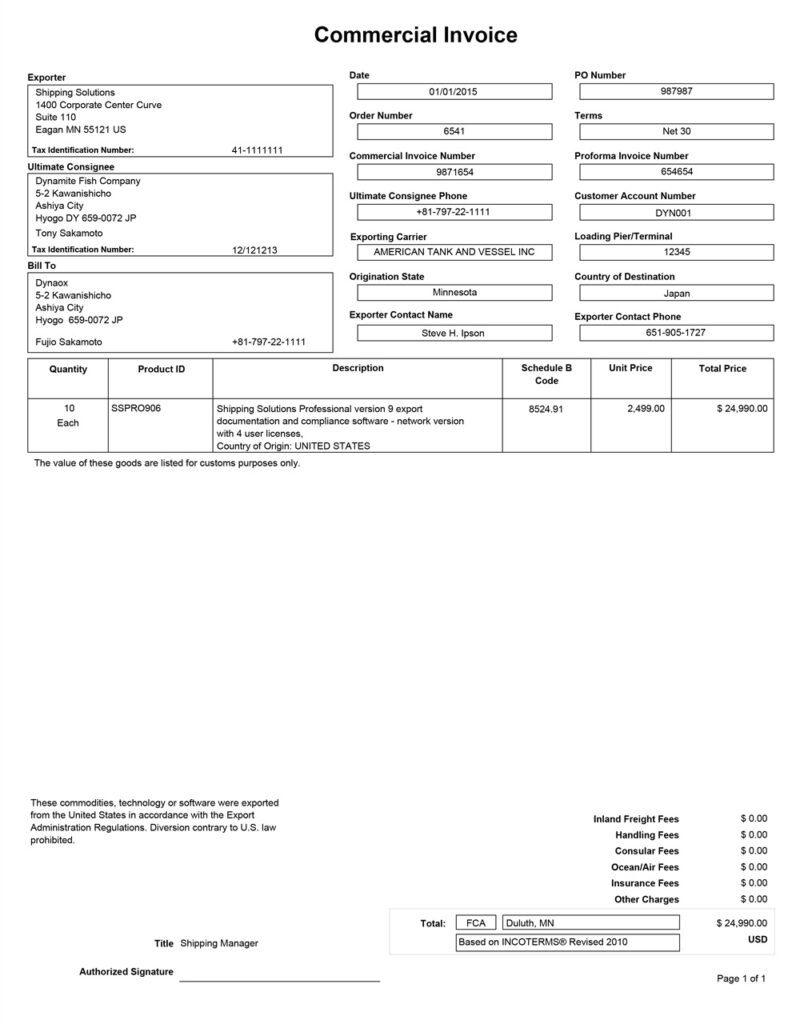
About the Proforma Invoice
A proforma invoice is a quotation prepared to resemble a commercial invoice. It is used to arrange a letter of credit to pay for the goods or, if needed, to arrange financing for the purchase. If done correctly, and if an order results, the final commercial invoice will closely resemble the proforma invoice.
Tips for Using the Proforma Invoice
